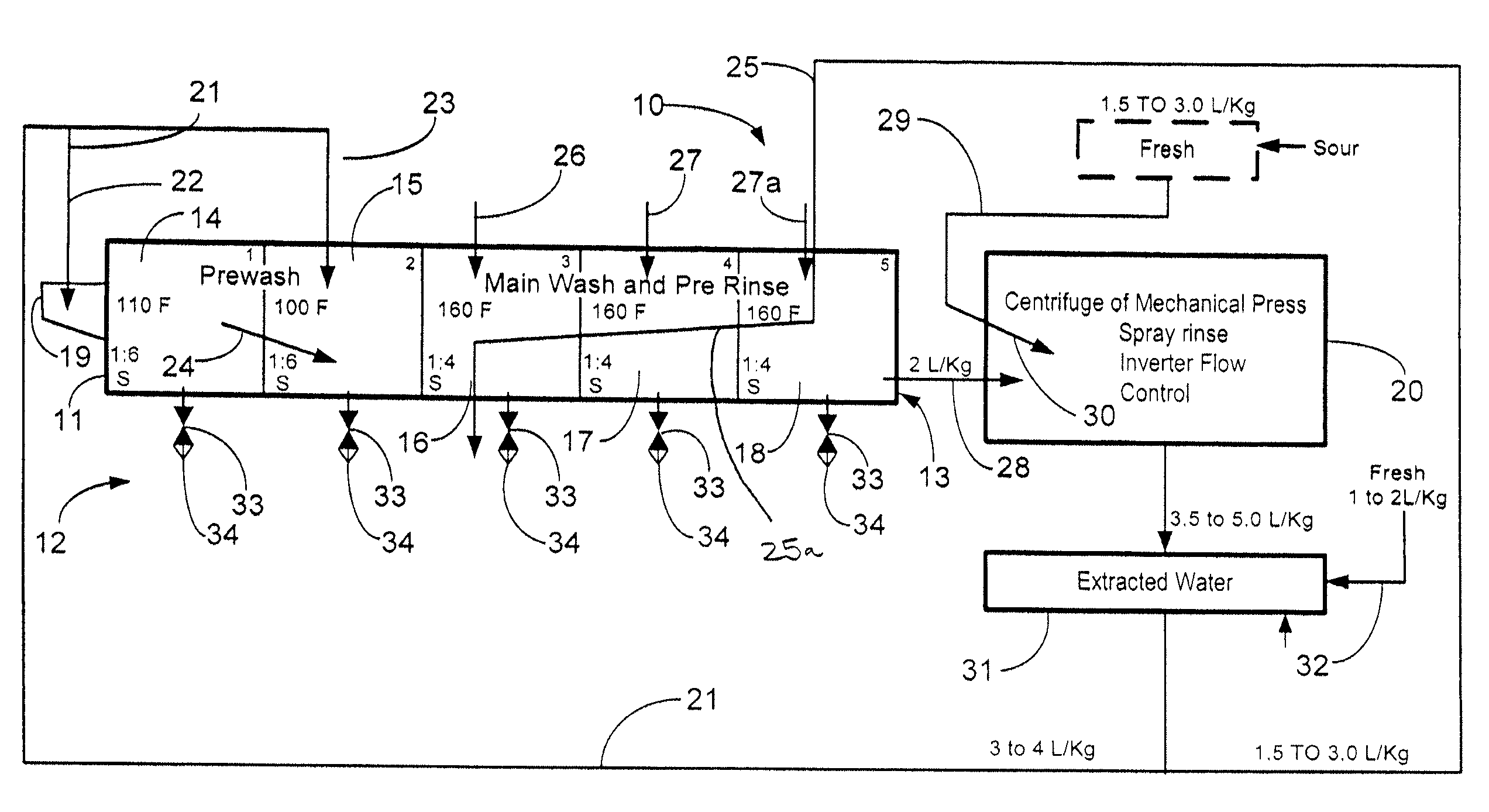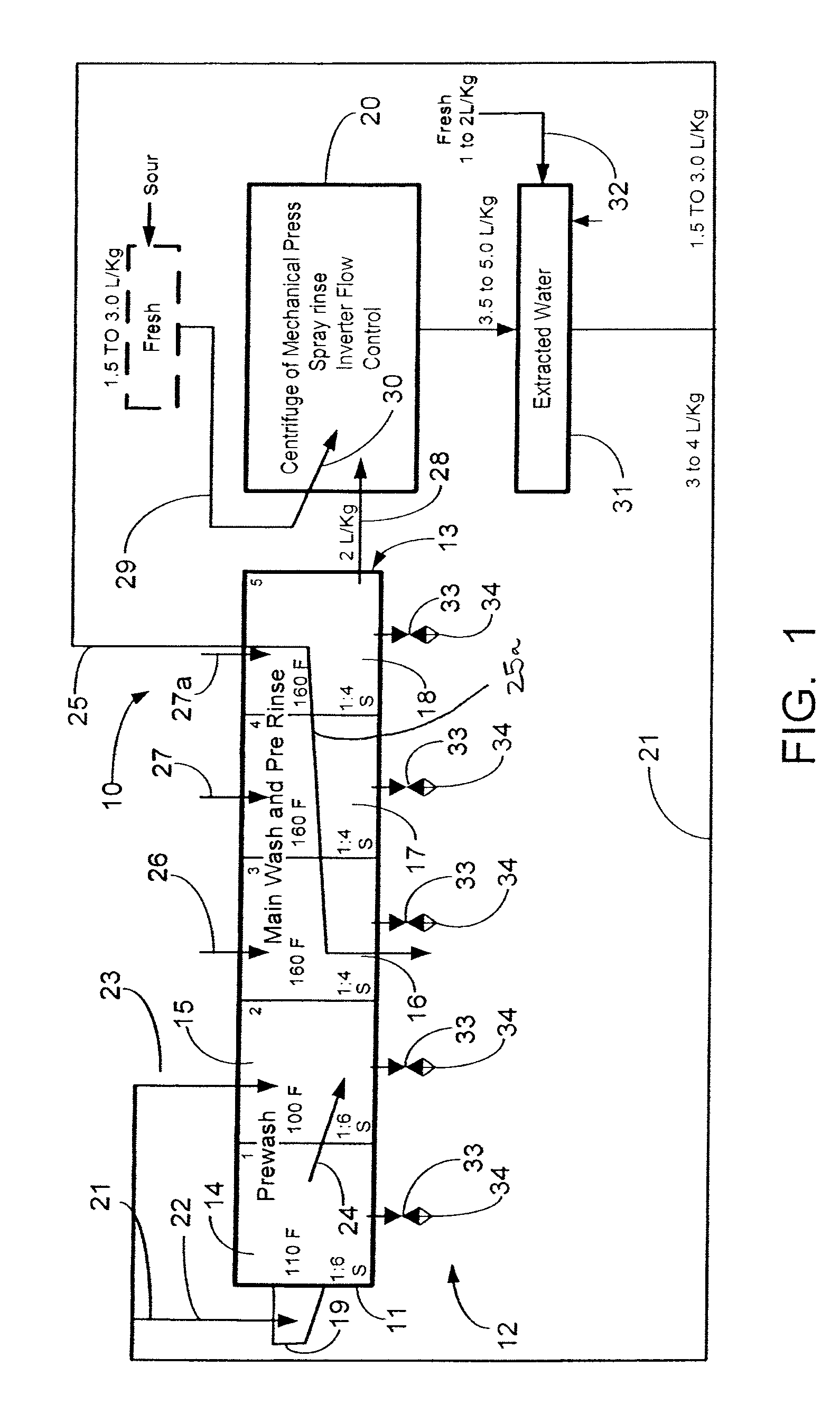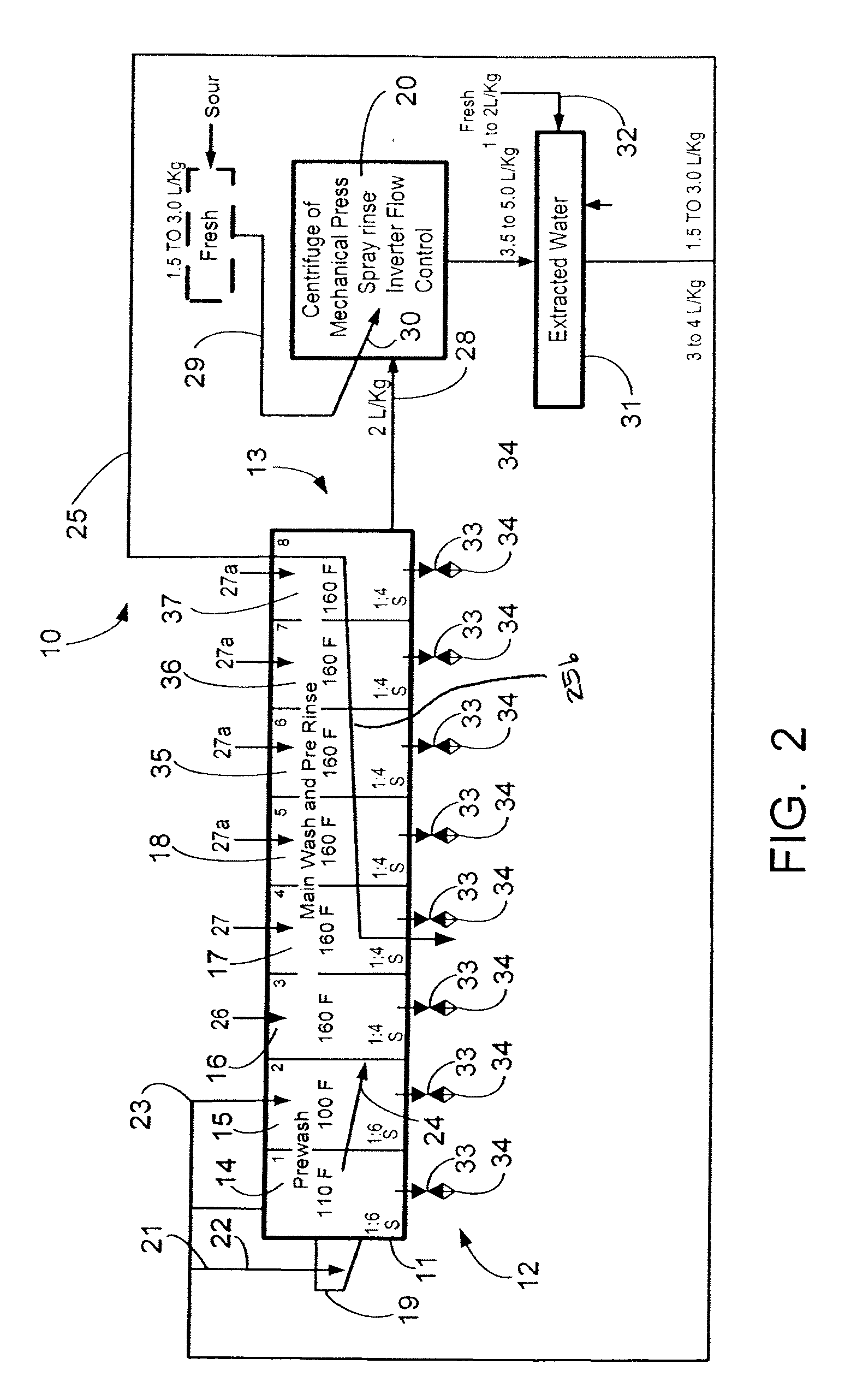Continuous batch tunnel washer and method
a technology of tunnel washers and washers, which is applied in the direction of detergent compositions, detergent compounding agents, chemistry apparatus and processes, etc., can solve the problems of wasting energy, reducing the effectiveness of washing chemicals, and dilution of washing chemicals, so as to improve the rinsing capacity, reduce the number of components, and reduce water consumption
- Summary
- Abstract
- Description
- Claims
- Application Information
AI Technical Summary
Benefits of technology
Problems solved by technology
Method used
Image
Examples
Embodiment Construction
[0029]FIGS. 1-3 shows a schematic diagram of the textile washing apparatus of the present invention, designated generally by the numeral 10. Textile washing apparatus 10 provides a tunnel washer 11 having an inlet end portion 12 and an outlet end portion 13. In FIG. 1, tunnel washer 11 provides a number of modules 14-18. These modules 14-18 can include a first module 14 and a second module 15 which can be pre-wash modules. The plurality of modules 14-18 can also include modules 16, 17 and 18 which are main wash and pre-rinse modules.
[0030]The total number of modules 14-18 can be more or less than the five (5) shown in FIG. 1. FIG. 2 shows an alternate arrangement that employs a tunnel washer 11 having eight (8) modules 14-18 and 35-37. FIG. 3 shows an alternate arrangement that employs a tunnel washer 11 having ten (10) modules 14-18 and 35-39. In FIG. 2, the modules 14, 15 can be pre-wash modules. In FIG. 3, modules 14, 15, 16 can be pre-wash modules. In FIG. 2, the modules 16, 17,...
PUM
| Property | Measurement | Unit |
|---|---|---|
| Temperature | aaaaa | aaaaa |
| Temperature | aaaaa | aaaaa |
| Time | aaaaa | aaaaa |
Abstract
Description
Claims
Application Information
 Login to View More
Login to View More - R&D
- Intellectual Property
- Life Sciences
- Materials
- Tech Scout
- Unparalleled Data Quality
- Higher Quality Content
- 60% Fewer Hallucinations
Browse by: Latest US Patents, China's latest patents, Technical Efficacy Thesaurus, Application Domain, Technology Topic, Popular Technical Reports.
© 2025 PatSnap. All rights reserved.Legal|Privacy policy|Modern Slavery Act Transparency Statement|Sitemap|About US| Contact US: help@patsnap.com



